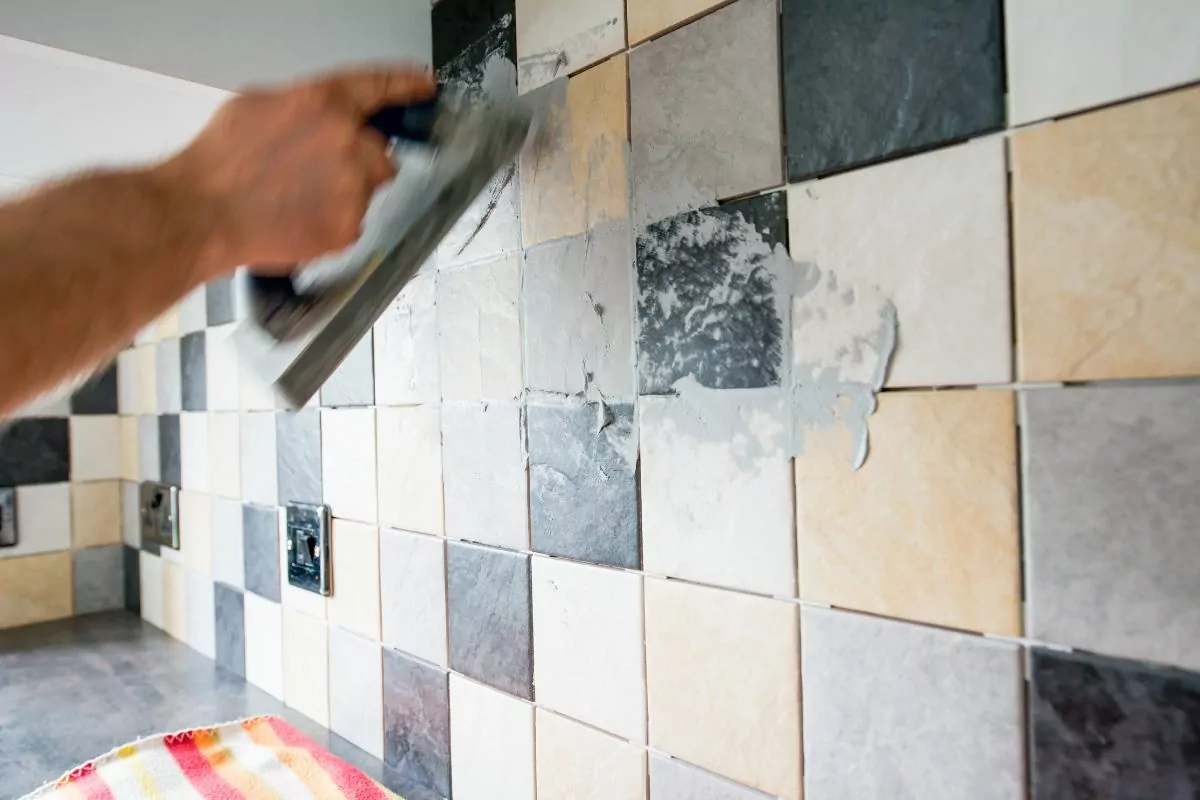Caulk is a versatile, quick-drying material used in construction and repairs that stops leaks, protects your home from moisture damage, and seals joints.
Still, drying alone isn’t what imbues caulk with these benefits. To really become waterproof it needs time to cure.

So how long does it take for caulk to dry? We have the answers below, as well as info on what factors may affect the drying process. Let’s get into it!
What Is The Difference Between Curing And Drying?
Often, when people want to know how long it takes for caulk to dry, what they actually want to know is how long caulk takes to cure. While these terms are often used interchangeably, they have their own meanings.
Drying
Caulk tends to be dry to the touch in 30 minutes to a few hours. Drying is the main process by which moisture and water evaporate from the caulk. Although drying is quick, only when caulk cures is it sealed from moisture.
Curing
Caulk can take at least a day to cure, but some formulas may need 12 days to cure under particular conditions. Curing is the more complicated and slower process that starts once caulk is exposed to oxygen.
Caulk needs to be totally cured before it’s exposed to moisture, or it will be washed away and will be ineffective as a waterproof sealant or filler.
What Affects The Drying Time Of Caulk?
How long it takes for caulk to dry and cure is dependent on a few factors, such as the caulk formula, the humidity and temperature, and the type of application.
Make sure you carefully read the product label and take the following into account:
Formula: The rates of drying and curing will vary depending on the kind of caulk material you use, and any additives in the formula may also lead to a longer waiting time.
Freshness: Many caulks have an expiry date, and even if the tube is sealed, caulk that is out of date isn’t going to properly cure.
Humidity: Silicone caulk cures due to a reaction with moisture in the air, and it’s most effective in an environment that is humid. However, acrylic latex caulk needs to be cured in dry air.
Temperature: Caulk cures best at 40 to 80 degrees Fahrenheit. Still, you shouldn’t ever increase the temperature by applying direct heat.
How Long Does It Take For Caulk To Cure?
There are three main types of caulk that are often used to caulk showers and damp spaces, and all three have distinct drying and curing times. Knowing these different curing times can help you prepare for your caulking project.
Acrylic Latex Caulk Dry Time
Acrylic latex-based caulks dry quickly and can take 1 to 10 days to cure. They can crack or shrink over time, which leaves surfaces vulnerable to moisture.
Therefore, they’re ideal for filling in small joints and gaps in wood, especially areas that you’re painting (see also “Can You Use Exterior Paint Inside?“). Some caulks have silicone additives that make them more water-resistant and durable.
Polyurethane-Based Caulk Dry Time
Polyurethane caulk has a longer drying and curing time than other kinds of sealants (see also “How Long Does Polyurethane Take To Dry?“). You can expect this caulk to take a day to dry, and 10 to 12 days to cure.
Polyurethane is dirt repellant, elastic, paintable, and watertight, making it a great caulk for use outdoors and for sealing windows.
Silicone Caulk Dry Time
This caulk can dry in just 30 minutes and takes at least a day to cure. They bond easily to nonporous, smooth surfaces such as ceramics, glass and metal.
Some of these caulks help to keep kitchens and bathrooms clean with their antimicrobial additives.
How Can You Make Your Caulk Dry Quicker?
Unfortunately, there is no method you can use to make the drying time faster. Drying and curing times will depend on the kind of caulk you use and its formula.
Still, there are preparations you can make to ensure your caulk cures efficiently. You should always carefully check the product label before you follow our tips:

Avoid freezing temperatures: Caulk may freeze in extremely cold temperatures, as cold air doesn’t have the moisture needed for caulk to cure.
Avoid water: Direct exposure to water will prevent the caulk from forming a tight seal, meaning you will have to remove the caulk and start over again.
Don’t dry the caulk with a hair dryer: Applying heat directly can melt or soften the silicone and prevent it from curing. Temperatures of 40 to 80 degrees Fahrenheit are the ideal temperatures for caulk to cure.
Turn off your heater: Dry air from a heater decreases humidity, so you should seal the room off to prevent exposure to vented heat.
Use a fan: This tip is just for acrylic latex, as it dries when water is evaporated. Therefore, having a fan on can make the curing process faster.
Use a humidifier: Since silicone cures when it reacts to moisture in the air, a humidifier can establish the perfect conditions for curing.
Final Thoughts
Caulk is an incredibly versatile material that is widely used in home repairs and improvement projects. Because of this, caulk formulas, applications, and cure times can greatly differ.
But when you consider the product, the humidity, and the temperature, you can gauge how long it will take to dry.
Frequently Asked Questions
If the caulk gets wet before it can cure completely, then its formula can’t perform as described on the label.
This may drag out the drying and curing time, or even affect the tight seal. If this happens, then you will need to remove the caulk and start over.
Although caulk tends to become dry to the touch about an hour after you’ve applied it, this doesn’t mean it has cured and is now totally waterproof.
Adhering to the cure times on the product label is the best way to determine when the caulk is dry.
Because showers are regularly damp, it’s crucial you stick to the recommended cure times printed on the product label.
When you’ve applied acrylic caulk in the shower, you should avoid using it for 1 to 10 days.
If you enjoyed this post, you might like our article about ‘How Much Is A Cord Of Wood?‘.
- What Kind of Room Has No Doors or Windows? - December 1, 2023
- What is a Powder Room? - December 1, 2023
- What Is a Kitchenette: Exploring the Features and Benefits of a Compact Kitchen - December 1, 2023










